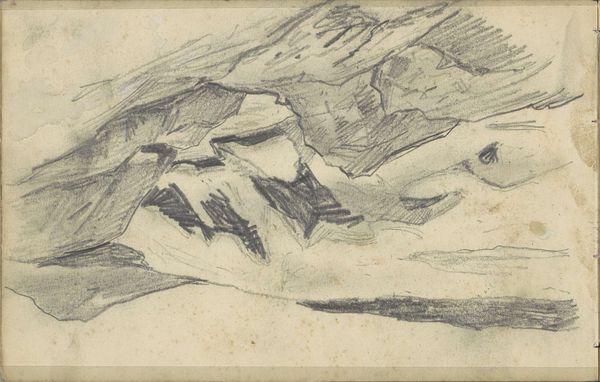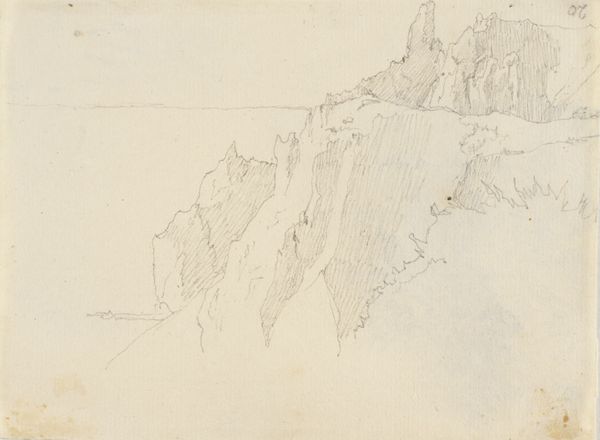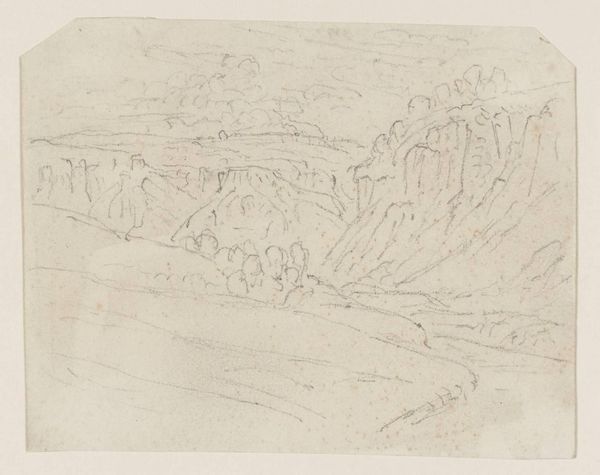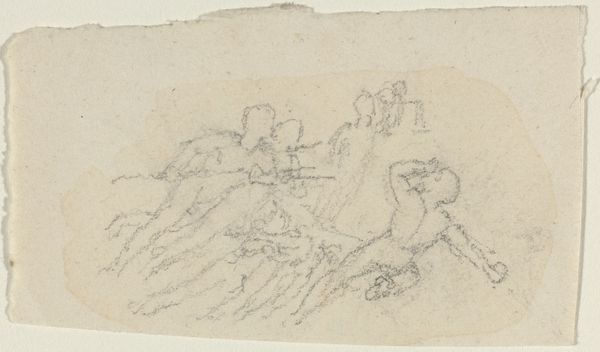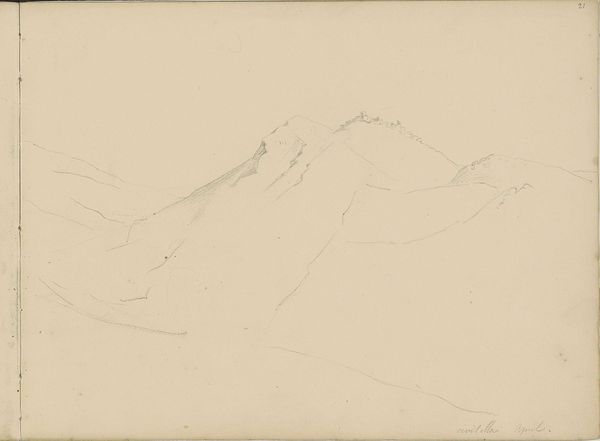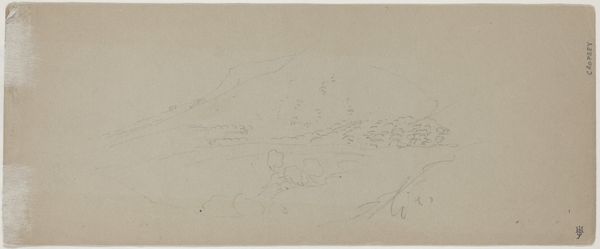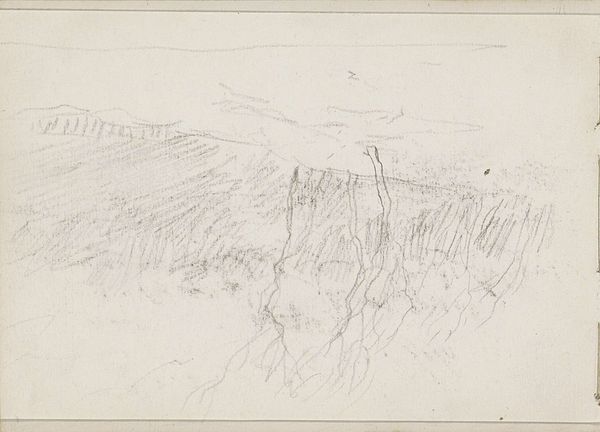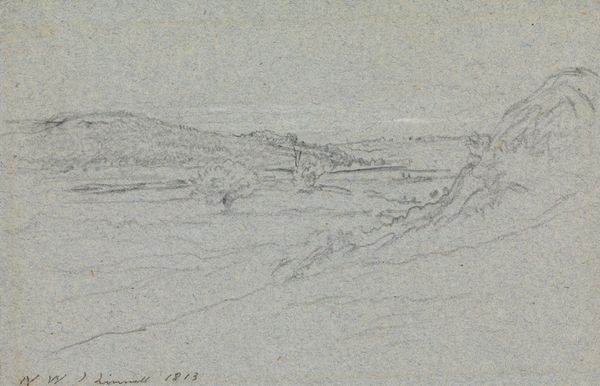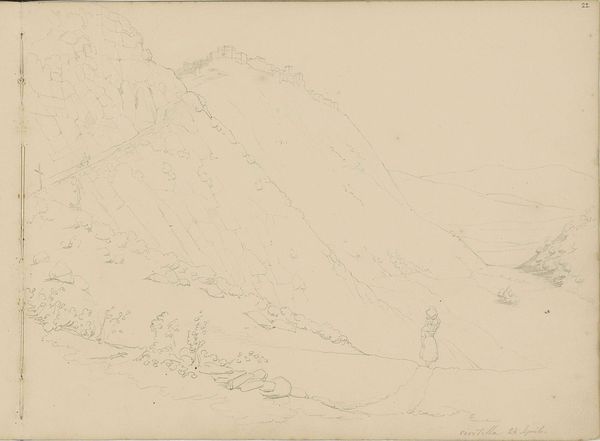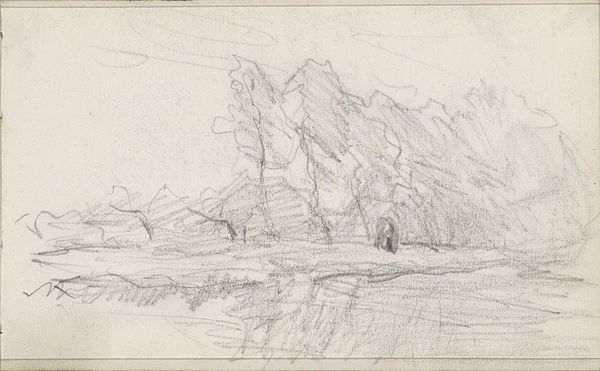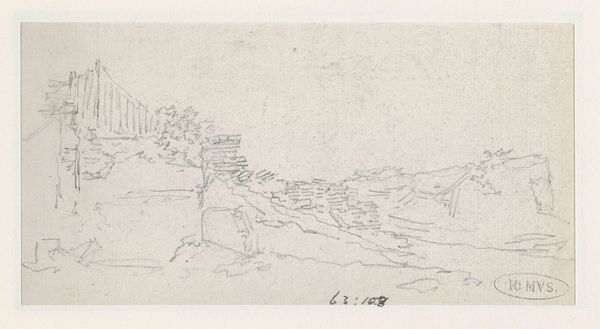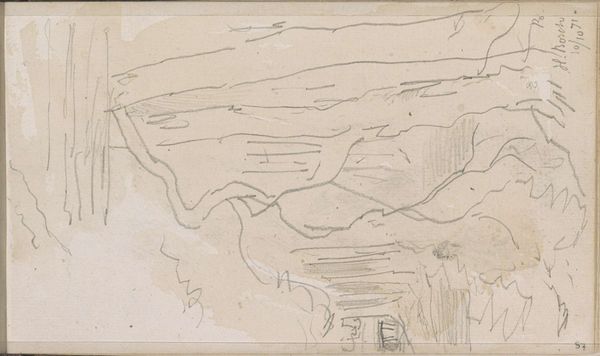
drawing, plein-air, pencil
#
pencil drawn
#
drawing
#
plein-air
#
landscape
#
romanticism
#
pencil
Copyright: Public Domain: Artvee
Editor: This is "Llanberis," a pencil drawing made en plein-air by John Linnell in 1813. There’s a real sense of depth despite the simplicity of the sketch; the lone figure adds to this feeling, a human presence amidst something immense and enduring. What symbols or interpretations stand out to you in this work? Curator: This drawing really captures something of the sublime—that feeling of awe mixed with fear when confronted with the vastness of nature. Consider the Romantic period context; artists were turning to nature for spiritual and emotional resonance. Llanberis itself, with its mountains, holds a potent symbolism. Editor: In what way? Curator: Mountains often represent the unyielding power of nature, the trials and tribulations of life, even spiritual aspiration. They’re enduring symbols found across cultures. Linnell places a tiny figure in this landscape, underscoring the relative insignificance of humankind. Does that evoke a specific feeling for you? Editor: A sense of vulnerability, maybe? But also a sense of wonder, as though the figure is drawn to the immensity despite the risk. Curator: Exactly! And note the sketchiness itself—it's unfinished, fleeting. Capturing a specific moment in time. This contributes to the feeling. There's an urgency here. It's more than just a landscape; it is an emotional and psychological state rendered in visual form. Editor: That's a different perspective than I initially had. Now, I can appreciate how much the imagery reveals those emotions. Curator: Art allows us to project these symbols, giving context to nature and cultural memory in various art styles. Ultimately, we internalize these shared values and understandings through visual forms.
Comments
No comments
Be the first to comment and join the conversation on the ultimate creative platform.
